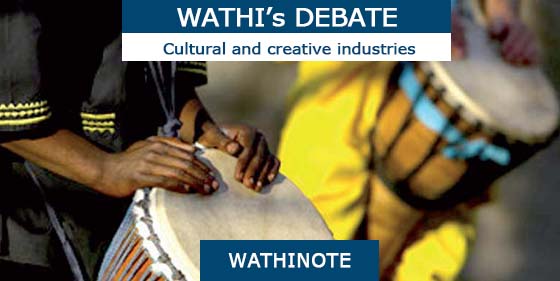

Author: Clementine Deliss
Site of publication: The Art Newspaper
Type of publication: Article
Date of publication: January 13th, 2020
In 1992, President Alpha Oumar Konaré of Mali declared that Africans needed to “kill” the Western model of the museum. He was addressing the International Council of Museums, of which he was president at the time. Since then, the only real counterpart to his inflammatory manifesto has been the 2018 report on restitution by Bénédicte Savoy and Felwine Sarr. Their coup is to have reversed the juridical position of requests for repatriation; it is no longer up to the African party to prove ownership but for French museums to substantiate the legitimacy of their acquisition.
The number of museums on the African continent extends way beyond those one hears so much about today, such as Zeitz MOCAA in Cape Town, South Africa, the Museum of Black Civilizations in Dakar, Senegal or the recently opened Palais de Lomé in Togo. From the 1860s through to the Second World War, colonial museums were built across Africa to promote European culture and trade. With perverse synchronicity, a glut of ethnographic museums was being simultaneously filled to the brim with extensive booty from African cultures.
Today, thanks to the initiatives of university departments of critical museology—such as the University of the Western Cape in Cape Town—and alternative art educational venues including the Centre for Contemporary Art and the African Artists’ Foundation (AAF) in Lagos, as well as Dakar’s Raw Material Company, a young generation of active, informed art entrepreneurs is growing by the day. The Lagos-based curator and initiator of the AAF, Azu Nwagbogu, wants a more self-assured approach to sharing and collaborating across the continent, with fewer vanity projects and art fairs. He sees a future in the digital, online museum that he claims can better address Africa’s youth, which constitutes over 60% of the population.
Museums on the African continent are still held hostage to an unequal push-me pull-you trade in culture and commodities that is underpinned by class-based neo-liberal politics. With Zeitz MOCAA, for example, European real estate entrepreneurs have transformed the historical harbour into a seamless merger between the lucrative experience of shopping and the fashionable consumption of art
But who invests in these new projects? The Chinese and Koreans may be ready to transplant a new building onto Africa’s soil, but what happens then? And how does this boom relate to the biennial model that for many curators has, until now, successfully substituted the need for exhibitions?
Museums on the African continent are still held hostage to an unequal push-me pull-you trade in culture and commodities that is underpinned by class-based neo-liberal politics. With Zeitz MOCAA, for example, European real estate entrepreneurs have transformed the historical harbour into a seamless merger between the lucrative experience of shopping and the fashionable consumption of art.
Moment is ripe for redefinition
That is perhaps where the challenge lies for museums in both Africa and Europe. In an art world in which mercantilism and activism lock horns, the time is ripe for artists and not only curators to reconfigure what can actually be done within the walls of a museum.
For Raphael Chikukwa, the deputy director of the National Gallery of Zimbabwe, museums are “living organisms” that need to address issues surrounding migration, xenophobia and climate change, and provide artists with the freedom to practice.
Cultural institutions in Europe, in particular ethnographic museums, need to recognise their role in unequivocally supporting transborder forms of research and collectivisation based on direct access to their historical collections. In this context, an experimental model of a ‘museum-university’ could offer a counterpart to the experience economy of world culture on the one hand, and the gated, monetised educational system touted by universities and art academies on the other. The ‘museum-university’ would provide the architecture for extensive trans-disciplinary research and education, acting as a vital sheltering structure for artists, scientists, historians and students from all over the world to meet, exchange, learn and develop contemporary imaginaries around collections both physical and digital while they are still held in Europe.
Les Wathinotes sont soit des résumés de publications sélectionnées par WATHI, conformes aux résumés originaux, soit des versions modifiées des résumés originaux, soit des extraits choisis par WATHI compte tenu de leur pertinence par rapport au thème du Débat. Lorsque les publications et leurs résumés ne sont disponibles qu’en français ou en anglais, WATHI se charge de la traduction des extraits choisis dans l’autre langue. Toutes les Wathinotes renvoient aux publications originales et intégrales qui ne sont pas hébergées par le site de WATHI, et sont destinées à promouvoir la lecture de ces documents, fruit du travail de recherche d’universitaires et d’experts.
The Wathinotes are either original abstracts of publications selected by WATHI, modified original summaries or publication quotes selected for their relevance for the theme of the Debate. When publications and abstracts are only available either in French or in English, the translation is done by WATHI. All the Wathinotes link to the original and integral publications that are not hosted on the WATHI website. WATHI participates to the promotion of these documents that have been written by university professors and experts.
